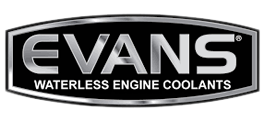For example, if Apple trades at $110 when it expires, the strike price is $100 and the options cost the buyer $2, the profit is $110 – ($100 + $2) = $8. If the buyer bought a contract equivalent to $800 ($8 x 100 shares), or $1,600 if he bought two contracts (8 x $200). If Apple is less than $100 at expiration, the option buyer will lose $200 ($2 x 100 shares) for each contract purchased. For stock options, call options give the holder the right to buy 100 shares of a company at a certain price, the so-called strike price, until a certain date, the so-called expiry date. Factors that affect the value of a call or warrant include: The day after the report, you exercise your right to purchase 100 shares of the company for $20 and sell them immediately for $30. This will earn you $10 per share, or $1,000 for a contract. Since the cost of the call option contract was $50, your net profit is $950. For example, an investor may own 100 shares of XYZ and be held liable for a significant unrealized capital gain. Because shareholders don`t want to trigger a taxable event, they can use options to reduce exposure to the underlying security without actually selling it. Although the profits of call and put options are also taxable, their treatment by the IRS is more complex due to the different types and variants of options. In the above case, the only cost to the shareholder of executing this strategy is the cost of the option contract itself. While the same variables affect the value of a warrant and a call option, some additional quirks affect the price of warrants. But first, let`s understand the two components of the base value of a warrant and a call – intrinsic value and fair value.
If the price of the underlying is higher than the strike price at maturity, the profit is the current share price minus the strike price and premium. This is then multiplied by the number of shares that the option buyer controls. So, to speculate on this assumption, buy a call option contract for 100 shares with an exercise price of $20 that expires in a month for $0.50 per option or $50 per contract. This gives you the right to purchase shares for $20 no later than the expiration date. Now, 21 days later, it turns out you guessed it right: ABC is reporting solid earnings and has raised its revenue estimates and profit forecasts for next year, bringing the share price to $30. A call option is traded in a very similar way. With a call option with an exercise price of $12.50 for a stock that trades at $12 and expires in a month, the price fluctuates depending on the underlying stock. If the stock is trading at $13.50 just before the option expires, the call is worth at least $1. Conversely, if the stock is trading at $12.50 or less on the call expiration date, the option expires worthless.
You take a look at the call options for the following month and see that there is a call exchange of $115.00 to $0.37 per contract. Thus, you sell a call option and receive the premium of $37 ($0.37 x 100 shares), which equates to an annualized income of about four percent. The basic attributes of a warrant and a call are the same: Three main differences between warrants and call options are: The price of warrants is slightly different because it must take into account the dilution aspect already mentioned as well as their “gearing”. Debt is the ratio of the share price to the purchase warrant price and represents the leverage provided by the warrant. The value of the warrant is directly proportional to its leverage ratio. If the share exceeds $115.00, the purchaser of the option exercises the option and you must deliver the 100 shares at a price of $115.00 per share. You still made a profit of $7.00 per share, but you missed an upside potential of more than $115.00. If the stock does not exceed $115.00, you will keep the shares and the $37 premium income. Options exchanges issue exchange-traded options on stocks that meet certain criteria, such as . B the share price, the number of shares outstanding, the average daily volume and the distribution of the shares. Exchanges issue options on these “optional” shares to facilitate hedging and speculation by investors and traders.
Basically, you use these instruments to bet on the rise in the price of an asset – a tactic known in the options world as a long-term strategy. For example, consider a warrant with an exercise price of $5 for a stock that is currently trading at $4. The term expires in one year and currently costs 50 cents. If the underlying stock trades above $5 at any time during the one-year expiration period, the price of the warrant will increase accordingly. Assume that the underlying stock trades at $7 just before the one-year warrant expires. The warrant would then be worth at least $2 (i.B the difference between the share price and the exercise price of the warrant). Instead, if the underlying stock is trading at $5 or less just before the warrant expires, the warrant has very little value. The dilution function makes a warrant slightly cheaper than an identical call option, by a factor (n/n+w), where n represents the number of outstanding shares and w represents the number of warrants. Let`s take the example of a share with 1 million shares outstanding and 100,000 warrants. If a call on this share trades at $1, a similar warrant (with the same expiry and exercise price) would be valued at approximately 91 cents. Fair value is the difference between the price of the call or warrant and its intrinsic value.
Let`s expand on the above example of a stock trading at $10: if the price of an $8 call is $2.50, its intrinsic value is $2 and its fair value is 50 cents. The value of an option with a zero intrinsic value is entirely composed of the time value. Fair value represents the possibility that the stock will trade above the strike price when the option expires. While warrants and calls offer significant benefits to investors, they are not risk-free as derivatives. Investors must therefore have a good understanding of these versatile instruments before venturing into their portfolios. The biggest advantage for retail investors when using warrants and call warrants is that they offer unlimited profit potential while limiting the potential loss to the amount invested. A buyer of a call option or warrant can only lose his premium, the price he paid for the contract. The other big advantage is their leverage: buyers get a price, but only pay a percentage in advance; the rest is paid when they exercise the option or mandate (presumably with the remaining money).
Covered calls work because if the stock exceeds the strike price, the option buyer exercises his right to buy the share at the lowest strike price. This means that the author of the option does not benefit from the movement of the stock above the strike price. The maximum profit of the author of the option on the option is the premium received. Call options are financial contracts that give the buyer of the option the right, but not the obligation, to purchase a stock, bond, commodity or other asset or instrument at a certain price within a certain period of time. The stock, bond or commodity is called the underlying asset. A call buyer benefits when the price of the underlying asset rises. Option contracts give buyers the opportunity to gain significant exposure to a stock at a relatively low price. .

 Posted in Uncategorised
Posted in Uncategorised 










